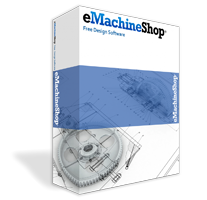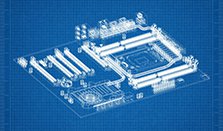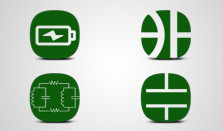PCB Glossary
Circuit Board Glossary
The following terms are used in connection with the design and manufacturing of printed circuit boards (PCBs):
Analog Circuit – an electrical circuit that provides a continuous quantitative output as a response from its input.
Automated Test Equipment (ATE) – equipment that automatically tests and analyzes functional parameters to evaluate performance of the tested electronic devices.
Built-In Self Test – an electrical testing method that allows the tested devices to test itself with specific added-on hardware.
CAD – Computer Aided Design.
CAM – Computer Aided Manufacturing.
Chip – the individual circuit or component of a silicon wafer, the leadless form of an electronic component.
Design For Manufacturing (DFM) – checks that ensure that the design fits the fabrication process requirements.
DFM includes a check for minimal trace width, minimal trace-to-trace distance, minimal hole clearance, etc.
Dielectric – an insulating medium between conductors.
DIP – dual in-line package with two rows of leads from the base in standard spacing between the leads and row. DIP is a through-hole mounting package.
Edge Connector – a connector on the circuit-substrate edge in the form of plated pads or lines of coated holes used to connect other circuit board or electronic device.
Electronic Component – a part of the printed circuit board, such as resistor, capacitor, transistor, etc.
Fine Pitch – fine pitch is more commonly referred to surface-mount components with a lead pitch of 25 mils or less.
Footprint – geometry of pads for soldering certain electronic component.
Functional Test – the electrical testing of an assembled electronic device with simulated function generated by the test hardware and software.
Gerber File – data file used to control a photo-plotter.
Ground Plane – a conductive plane as a common ground reference in a multilayer board for current returns of the circuit elements and shielding.
IC – Integrated Circuit.
In-Circuit Test – electrical test of individual component or part of the circuit board instead of testing the whole circuit.
Leakage Current – A small amount of current that flows across a dielectric area between two adjacent conductors.
Legend – Printed letters or symbols on the board, such as part numbers and product number or logos.
Minimum Conductor Width – The smallest width of any conductors, such as traces, on a board.
Minimum Conductor Space – The smallest distance between any two adjacent conductors, such as traces, on a board.
Net – a set of pads that are to be connected electrically on the board.
Netlist – List of parts and their connection points which are connected in each net of a circuit.
NPTH – Non-plated through-hole.
Pad – Metallized area of the board for connection and attachment of electronic components.
PCB – Printed Circuit Board.
Pin (pinout) – part of an electronic component which is soldered to the board.
Pitch – the center-to-center spacing between conductors, such as pads and pins, on a board.
Plastic Leaded Chip Carrier (PLCC) – a component package with J-leads.
PTH (plated-through hole) – a plated hole used as a conducting interconnection between different layers or sides of a board either used as connection for through-hole component or as a via.
Routing (tracing) – the process of placing electronic connections (traces) between pads on the board.
Signal layer – layer of a board, in which traces can be placed. For a two-sided board two signal layers are available – the Top and the Bottom layers.
Silk screen – a layer designed for placing legend elements on the top or bottom side of the board. Two corresponding layers are available – the Top Silk and the Bottom Silk.
Small Outline Integrated Circuit (SOIC) – an integrated circuit with two parallel rows of pins in surface mount package.
SMD – Surface Mount Device.
SMT – Surface Mount Technology.
Test Point – a specific point in a circuit board used for specific testing for functional adjustment or quality test in the circuit-based device.
Thermal pad – pad of a special form used when it is connected to copper pours. Thermal pads improve solderability of the joint, reducing the chance of a so called ” cold solder joint ” .
Through-hole – a drilled hole in the board, usually for mounting purposes.
Trace (or Route) – a layout or wiring of an electrical connection.
UL – Underwriter’s Laboratories. A popular safety standard for electrical devices supported by many underwriters.
Via – a plated-through hole used for interconnection of conductors on different sides or layers of a circuit board.
Wave Soldering – a manufacturing operation in which solder joints are soldered simultaneously using a wave of molten solder.





